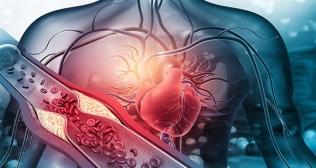
The Heart of The Matter

At the end of a tiring day, Sanjay Guha, 42, was heading home after a meeting, a shooting pain through his left shoulder and radiated down to his chest. Guha was breathless in a matter of seconds. But he managed to instruct his driver to reach the nearest hospital. An emergency angioplasty and stent insertion minimised the damage caused by the heart attack that had struck him. Guha represents the new heart patient in India. Unlike developed countries where heart disease is predominantly associated with old age, here in India, cardiovascular diseases (CVDs) have become rampant among the young and middle-aged: data released by the National Heart Institute (NHI) last month shows that over the last five years, there has been a 28 per cent rise in heart patients below 40years of age.
Earlier believed to be a disease of affluence, heart disease is now the leading cause of death and disability in low and middle-income countries such as India: about 25 per cent of all deaths in the 25-69 years group are attributable to CVDs, says a 2013 study by the Registrar General of India (RGI) and the Indian Council of Medical Research (ICMR). “Undetected heart disease wreaks slow damage in the body, ultimately leading to life-threatening episodes,” says Dr Ashok Seth, chairman, Fortis Escorts Heart Institute, Delhi.
Women, too, have to bear the brunt of escalating heart disease. Some 14.3 per cent of females in a Kerala community-based cross-sectional study were diagnosed with coronary artery disease, says a 2016 study published in *BMC Cardiovascular Disorders*. Despite the estimated three-fold rise in incidence of heart disorders among women in the past decade, women are yet to take the risk seriously.
As in the case of men, CVDs are also striking younger women: a 2016 study by the NHI, covering five years, shows a rise in the number of younger, pre-menopausal women being treated for heart disease.
Poor lifestyle choices are to blame for 80 per cent of the cases of coronary artery disease in the world, says the World Health Organisation (WHO). Epidemiologists also point to the link between rise in CVDs and other lifestyle or non-communicable diseases (NCDs) such as diabetes and hypertension.
Smoking, obesity, high BMI and abdominal obesity, hypertension, high cholesterol, diabetes, high stress levels, genetic predisposition, and an unhealthy lifestyle, contribute to the risk. Though the risk factors for men and women are the same, socio-cultural and gender factors make women extra susceptible.
The increased longevity of the population contributes to the burden of heart disease. Other factors such as the rise in pollutants are related to cardiac emergencies too. “Air pollutants and noxious gases cause damage and constriction of blood vessels, increasing cholesterol deposits and clotting, and raising the risk of heart attacks,” says Dr Seth.
Around 20-30 per cent of patients in India are believed to have a family history of heart disease, which means an immediate family member--father, mother, brother or sister--developed a cardiac ailment before the age of 55. This raises their metabolic pre-disposition to heart disease. “Despite a healthy lifestyle and diet, this group may have high cholesterol levels because around 60 per cent of cholesterol is generated by their own bodies,” says Dr Seth.
Prevention of heart disease is inarguably the only way to stop it in its tracks. Despite the wealth of information available on how to live a heart healthy life, most still have a curative mindset towards cardiac care. While bypass surgery and angioplasty can undo blockages, and statins can prevent heart attacks, these measures must be combined with healthy lifestyle practices to maintain a healthy heart. Early detection of CVDs increases the chances of recovery, manifold.
Young people with high risk factors such as family history, hypertension, smoking, or high levels of CRP (C-reactive protein) are also advised to get screened periodically. “The plaques that eventually lead to clogged arteries start accumulating during adolescence, so cholesterol checks should begin as early as age 20,” says Dr Seth.
Ultimately, heart health is also a factor of one’s emotional wellbeing. Mental health experts recommend maintaining close connections with family and friends, and including stress busting activities in daily life, to reduce risk of heart disease.
Risk Factors
- High cholesterol
- Diabetes
- High blood pressure
- Family history of heart disease
- Abdominal obesity
- Insomnia
- High stress
- Depression
- Smoking
- Unhealthy Lifestyle
Prevention by
- Adopting a multi-pronged response
- Shifting the focus from a curative to a preventive care approach
- Establishing robust monitoring and surveillance mechanisms
- Aggressive intervention policies for prevention, diagnosis and treatment in all socio-economic groups
- Improving access to life-saving drugs, devices and technologies for CVD
Reduce your Risk
- Kick the butt if you are a smoker
- Lose weight and reduce your belly fat
- Control diabetes and hypertension
- Limit your intake of fats to 300 mg daily and use monounsaturated fats, such as olive or canola oil for cooking
- Five servings a day of fruit and vegetables can boost your heart health.
- Limit your intake of sugar and salt.
- When you eat out, choose grilled and broiled items on the menu.
- Walk for 30 minutes daily
- Meditate and do yoga
Categories
Clear allMeet the doctor

- Cardiac Sciences | Interventional Cardiology
-
40 Years Exp
-
5000 Fees



















